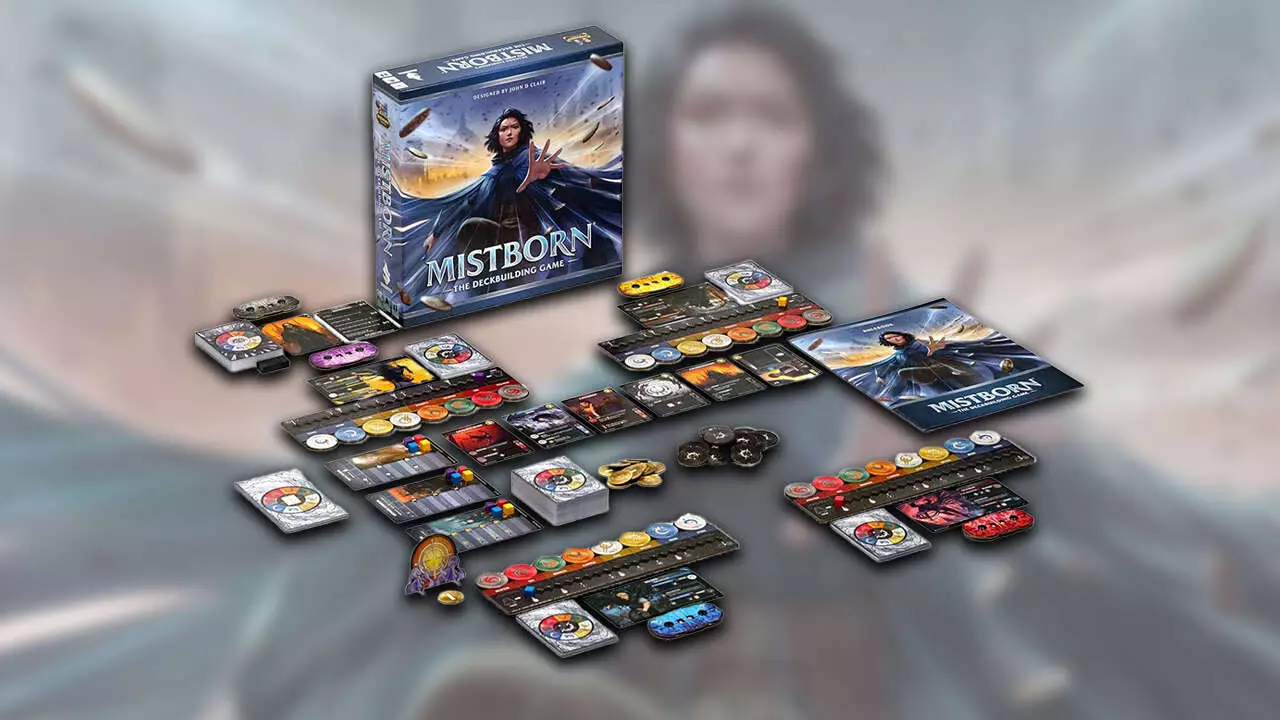Brandon Sanderson has taken the literary world by storm with his intricate storytelling and captivating universes. Now, he extends the reach of his popular *Mistborn Saga* through an engaging tabletop experience—*Mistborn: The Deck Building Game.* Retailing at $45 on Amazon, this new venture promises to immerse fans even further into Sanderson’s vivid world of Allomancy, and it does so with elegance and sophistication. By allowing players to embody characters and manipulate resources, this game offers a unique blend of strategy, fantasy, and playful competition that is sure to attract both tabletop enthusiasts and existing fans of the series.
The Game Mechanics: A Blend of Strategy and Lore
At its core, *Mistborn: The Deck Building Game* is designed for 1 to 4 players, making it flexible for various gaming settings, be it a bustling game night or a quiet evening at home. The game effectively combines a point-based “purchase” system, allowing players to customize their own decks with cards specifically designed from the rich lore of the series. Every character, item, and magical concept resonates with Sanderson’s original writing, giving fans an authentic experience.
Central to the gameplay is the “Burn” mechanic, reflecting the metal-based Allomancy that fans have come to love. This innovative approach to resource management links gameplay directly to the novels, and it’s an example of how well the game’s designers have captured the essence of the source material. The different modes of play—whether competitive head-to-head, solo, or cooperative against the formidable Lord Ruler—introduce varied challenges and enhance the replay value of the game.
Accessible Yet Deep: Engaging Different Play Styles
Regardless of whether players choose to duke it out in competitive mode or join forces against powerful adversaries, the game remains accessible without sacrificing depth. The inclusion of missions adds layers of complexity and strategy, encouraging players to think critically about their moves. Matches typically span around 45 minutes, making it a concise experience that doesn’t drag on, an essential quality for keeping players invested in the action.
Moreover, this deck-building game doesn’t exist in isolation within Sanderson’s works. It joins a growing portfolio of tabletop adaptations, including the engaging *Call to Adventure: The Stormlight Archive* card game, which pushes boundaries within the genre. Fans of the *Stormlight* series will appreciate this crossover appeal, further solidifying Sanderson’s influence beyond traditional book sales.
What Makes It Stand Out?
While tabletop gaming is oversaturated with options, *Mistborn: The Deck Building Game* stands out through its carefully crafted content and adherence to narrative elements. The way in which the game creates an atmosphere that feels true to the *Mistborn* experience is commendable. Unlike many games that rely heavily on generic themes, this game provides a unique embrace of a specific universe that fans can relate to. Interestingly, the game is enjoyable both for those who have read Sanderson’s work and for newcomers, thanks to its intuitive mechanics.
Sanderson’s *Mistborn* saga is notable for its intricate world-building and complexity, and the game captures a taste of that in a digestible format. The carefully designed aesthetic and visual elements reflect the universe’s rich backdrop, immersing players in a world that feels thoroughly imagined. For seasoned fans, the abundant references are rewarding, elevating the experience.
A Look at Broader Trends: The Rise of Tabletop Adaptations
As *Mistborn: The Deck Building Game* emerges, it’s essential to consider its place within the broader trend of fantasy adaptations in tabletop gaming. With games like *Call to Adventure* flourishing and even franchises like *Boss Monster* revamping their classic content, it signals a market that not only recognizes but embraces the merging of gaming with narrative depth. This trend is a testament to the evolving ways we engage with stories, allowing fans to participate actively in narratives rather than passively consume them.
The success of these types of games suggests a future ripe with possibilities. With Scarcity-based storytelling and tactical games gaining traction, the demand for more adaptations is likely to rise. For authors like Sanderson, who already boast a deep and complex universe, the synergy creates boundless opportunities to capture and cultivate audiences across multiple platforms.
Amidst the flourishing landscape of tabletop gaming, *Mistborn: The Deck Building Game* serves as a rich canvas, elegantly marrying strategic depth with exuberant fantasy. In doing so, it ensures that the *Mistborn Saga* continues to live on, not just in the pages of books but in the hearts and minds of gamers who relish every decision on the path to victory.

